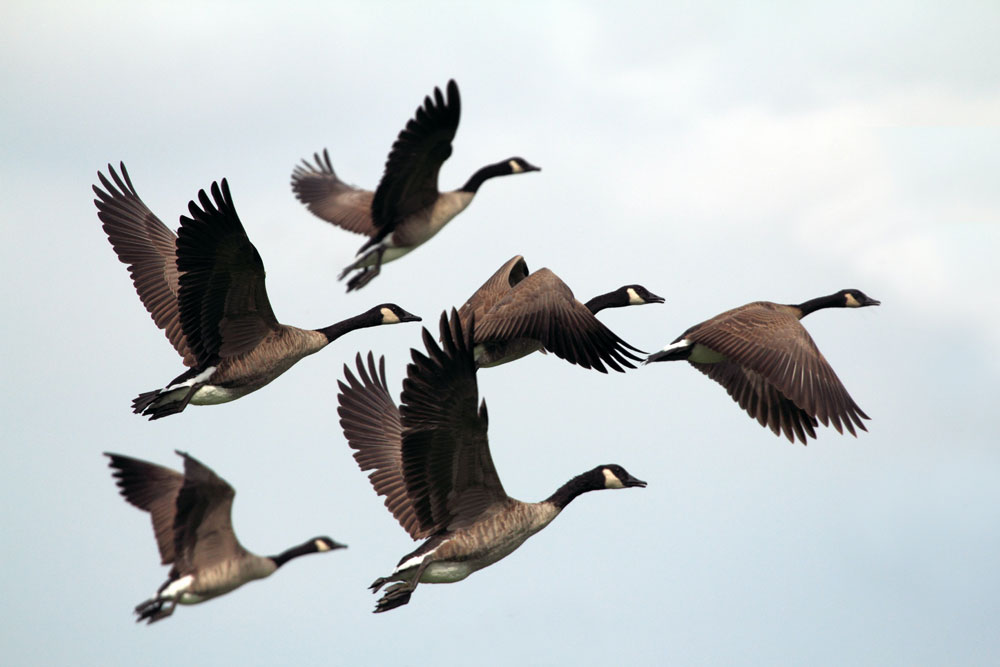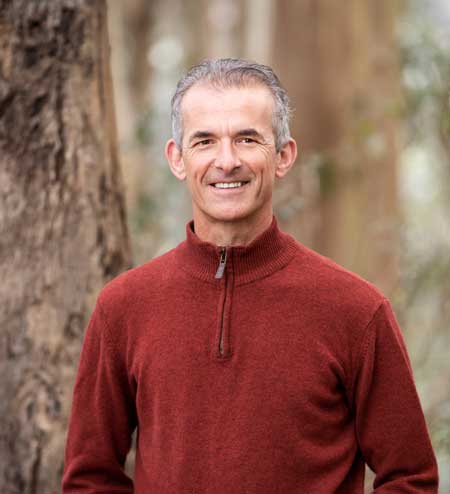It can be hard to maintain a sense of calm, perspective, or balance. We may need extra support and resilience to meet the troubling conditions of life.
Nature has the power to be that profound support, to calm us, to lift our hearts and teach us about resilience in adversity. And when paired with contemplative meditation, nature becomes a support for wisdom, joy and nourishment. It can be transformative and life-saving.
This Resilience and Nature course reveals how mindfulness in nature supports you to live with a steady presence and peaceful heart in the midst of turbulent conditions. But these practices are not limited to the “great outdoors”. You can practice meditation in nature anywhere: in your garden, on your balcony, or while simply looking out a window or gazing at a plant in your home. Each practice allows you to connect to the power of nature’s stillness and wisdom. They will fortify you with resilience.
Course Details

12 Videos on Nature Practice
Each week you will receive two videos on the week’s theme in nature practice to support you in integrating the teachings into your own practice. Videos will be released on Mondays and Thursdays.

13 Guided Audio Nature Meditations
Two audio nature meditations per week, with the exception of one week where three meditations are offered, for you to practice in nature in your own time. Released each Tuesday and Friday during the course.

11 Inspirational Reflections/Readings
Mark offers two readings and/or reflections every week, except one week where he offers an extra audio meditation, to support and help deepen your practice. Released Wednesdays and Saturdays.
For a description of the topics each week, keep reading!
Cost
$199 for 90 Days Access
For six days a week for six weeks, you will gain daily access to new materials to help you deepen your meditation practice in nature. And since there is a lot here, to learn and download, you’ll have extra time after those six weeks to access the materials.
A Downloadable, At-Your-Own-Pace, Online Course
Access to this Resilience and Nature is for 90 days.
The course was designed so that for six days a week for six weeks, you will have new materials to help you deepen your meditation practice in nature. But if life interrupts, you have extra time with the course materials. And since there is a lot here to learn, all of the course videos and meditation are downloadable.
More Details About the Course

Week 1: Grounding & Stabilizing in Breath & Body
The first module we will explore foundational nature-based, sensory awareness meditations. These grounding practices connect us to our bodies, to the body of the earth and to our senses link us to life all around us.
The first practice is a Mountain Meditation, which supports you to sense a grounded connection to the earth and can help you find ballast and a rooted steadiness in these changing and challenging times. Sensing the earth in this Mountain Meditation practice is one way to access that wherever you are.
The second practice we will explore is a Stabilizing Breath Practice. The breath connects us with all living breathing life and with all photosynthesizing plants, trees and grasses. It is a practice of receiving life giving oxygen and realizing our connected-ness with all life. The breath gives us both grounding and stability present moment awareness.
Mark will be teaching about the body as a support for presence, embodiment and for keeping us rooted in the living present, rather than being lost in our swirling thoughts and feelings. He will point to how the body is a conduit for accessing calm, stability of presence and peace.
Drawing on the Buddha’s teaching of the Foundations of Mindfulness where he emphasized the primary role of the body in developing mindfulness, Mark will guide you in developing this sense-based orientation, that uses our sensory connection to the natural world through our body and breath.
This begins the exploration of the inter-relationship between our bodies and the body of the earth.

Week 2: Sensory Awareness & Listening Practice
The heart of nature-based practice is to orient to the full range of your sensory experience. The senses are the portal to the beauty, richness and vitality of the natural world.
The more we ground in the sensory present the less we are caught up in our thoughts and worries. Nature is by nature restful, calming and not mentally caught up as humans are in anxiety about the future.
By attuning to the senses we wake up to the vitality of the living present. In the first meditation we cultivate Mindful Listening. We open to sounds of birds, rain, wind and animals calling us into the present. The symphony of sounds can be a source of delight, connecting us viscerally to the life around us.
And the sounds of silence, of the night, of crickets and frogs can also attune us into stillness, calm and rest.
Through listening practice we understand one of the principles of nature practice, that it can be done in a relaxed, effortless way and discover how naturally we can abide in present moment awareness.
The second meditation we will explore is an Open Sensory Awareness Practice. Mindfulness meditation generally orient either to a more focused lens of attention or being present with a wide aperture where we take in the fullness of our experience
In sensory awareness practice we learn to abide with a meditative presence present to the rich flow of sensory experience: the vitality of the fresh oxygen we breathe, the rich cacophony of sounds around us, the breeze touching our skin, the fragrance of the air we inhale, the sunlight warming us, and the quality of light dancing everywhere.
With that we feel the natural supportiveness of sensory experience to ground in the present moment. We begin to viscerally understand the changing nature of experience, no two moments being the same. And we begin to open to the delight of this connection with the living world around us.
Week 3: Inclining to Joy & a Beauty Walk
This week focuses on understanding that we always have agency with what we do with our attention. And what we do with our attention matters.
The teaching is oriented around the Buddha’s key phrase – “Whatever the mind (attention) frequently dwells and ponders upon, that becomes the inclination of the mind (and heart).”
The self-awareness that comes with mindfulness practice helps us to notice when our mind and attention is inclined to what is useful or harmful.
The gift of Nature meditation practice is we can learn to train our attention to notice beauty and that which is uplifting to mind and heart.
The first meditation–Inclining to Joy–orients you to pay attention to your inner and outer sensory experience and what allows you to feel positive and what uplifts your heart and mind.
The second is a moving, walking meditation called a Beauty Walk. In this practice we take our practice outdoors and incline our attention to beauty and to whatever brings gladness and delight through attuning to sounds, sensations, sights, smells and the touch of the natural world.
The teaching in this week focuses on how inter-dependent our mind, heart and attention are. It is so easy in times of stress to focus on the negative, to what is broken, wrong, distressing or problematic. Although we need to attend to the challenges in our life, to only give them our attention and not to the other things in our life that are not stressful, leads easily to burn out and contraction.
So, with that understanding and with skillful, mindful intention, we can learn to incline our awareness to that which allows us to feel nourished, grounded, joy. All these qualities are key factors in developing a sustainable resilience in the face of difficulty.

Week 4: Attuning to Impermanence & Meandering Walk Practice
Nature is a profound teacher. As the poet Kabir wrote: “When the eyes and ears are awake, even the leaves on the trees read like leaves from the scriptures.”
Indigenous cultures have known for millennia that the earth is a profound and perennial teacher. Its teachings are everywhere for those that have eyes and ears to listen.
And with mindfulness practice we can learn to attune to the wisdom that whispers in the breeze or from the flow of the stream.
Impermanence, the eternal truth that everything is changing constantly, is perhaps the most obvious lesson we learn from natural world. No two moments are the same. Indoor living tends to shelter us from this truth.
Being outdoors with awareness we see and hear first-hand this living reality. And as we become more intimate with this experience through a contemplative attentiveness, we see how everything is constantly in flux, being born, growing, flourishing, decaying and dying and renewing.
The more we attune to this the more we come to know this in our bones and live in harmony with this wisdom.
In the Meditation on Transience, we discover this in our moment-to-moment changing sensory experience, that every moment our body, breath, mind, thought, heart and senses are always in flux.
Such orientation allows us to find steadiness in the midst of the inevitable and unpredictable changes in our lives.
In the Meandering Walking Practice we allow ourselves to wander through a landscape and orient to that truth all around us. Meandering meditation also allows us to let our body walk and be drawn to whatever is present in the environment and so brings forth a natural curiosity and grounding connection to the landscape we are in.

Week 5: Fluid River of Awareness Practice & Orienting to Stillness
There are many times in our lives when we hear ourselves or others say these are challenging times. Whether the difficulty is internal or external it is essential we learn how to manage adversity in whatever form it comes.
This week you will explore how Mindfulness in Nature practices are important resources during periods of stress.
Life is like a river, always flowing, changing. It is perennially responsive to the obstacles that lay in its path and forever finding ways to navigate the challenges it encounters on its ever descending path.
In the same way with an open awareness and a non-reactive attention we can learn to become like a river, fluid, and flexible as we in turn charter our own unique path through the challenges in our own lives.
The Fluid River of Awareness Meditation reveals how we can develop a spacious attention that can not only accommodate all experience, but can learn to flow with it in a skillful way. With that attunement it is easier to then find the appropriate response to the moment wherever we are.
Often in times of turmoil, we feel tossed about like the surface of a lake during high winds. In those periods it is easy to feel agitated, and our mind can be a flurry of thoughts while our body experience restlessness and our heart troubled.
Taking refuge in nature during those times, with a contemplative attention can be a great balm during such times.
Nature is rarely stressed and often exudes a calm presence, a deep stillness and a soothing quiet, that is like medicine to our troubled nervous system.
In this Stillness Meditation we learn to attune to stillness around us in nature – in the stability of the earth underfoot, to the calmness of stone, the steadiness of trees in the forest, or the tranquility of the still morning air and the silence of the night.
Orienting to stillness in our environment allows that quality to be evoked within us. And the more we learn to access that quality the easier it is we can invoke that still presence when necessary.

Week 6: Loving Benevolence & Gratitude Practice
Many people feel a profound sense of love when immersed in natural world. We can often sense a quality of benevolence issuing forth from trees, flowers, animals, birds, clouds and the sun itself.
Nature is often a place we sense a quality of safety, welcoming, acceptance and non-judgment more than perhaps anywhere else. Because of that, being outdoors in a natural setting can be healing and an important counterpoint to the ways we can judge and reject ourselves or ways we feel hurt and criticized by others.
In the Benevolence Meditation we attune to all the ways we feel loved and cared for by the earth. That may be the way we feel safe and protected in a grove of trees, or warmed by the life-giving sun, or soothed and nourished by gentle rain.
In the same way we also learn to extend our hearts to all the life forms in nature that touch and nourish us. We learn to radiate kindness and love to trees, plants, birds, animals, insects, clouds, mountains, skies and the earth herself. With that, we come to hold all life with a heart as wide as the world.
What arises out of feeling all the ways we are given to, held, inspired and nourished by this earth is often gratitude, a deep appreciation for life that sustains us moment by moment.
In the Gratitude Meditation we learn to extend an appreciative heart to all the life that sustains us. This includes the air we breathe, the sun that warms us, the plants that nourish us, the beauty that inspires us and the rains that hydrate us.
As we reflect on all that we are grateful for in nature we realize that our list is never ending. And in that nature teaches us to be thankful for every moment in every day, which allows us to live with a heart of abundance and joy.

Register Now
Sign up now to learn how Resilience and Nature with Mark Coleman can help you move closer to calm, peace and stillness.
Cost – $199
Cancellation and Refunds: $50 of your payment is a nonrefundable deposit, no exceptions. Cancellations will only be accepted within 48 hours of your registration. If you need to cancel, email Jen at jen@awakeinthewild.com.


